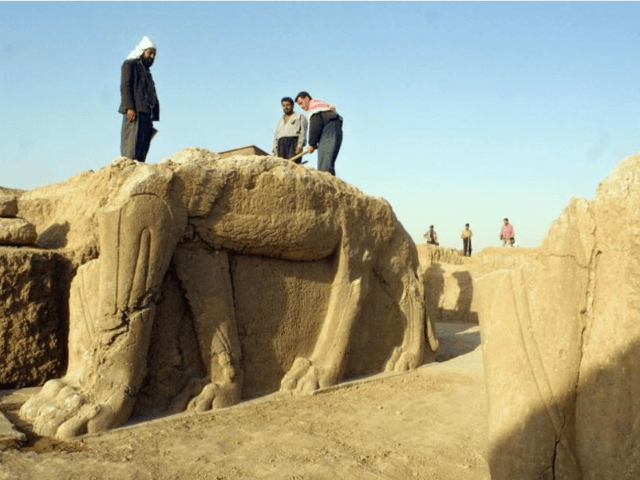The archaeological world and international community are in mourning as the Iraqi government announced Thursday that Islamic State (ISIS) jihadists had leveled the remains of the ancient city of Nimrud, a priceless archaeological site considered a major treasure of Assyrian civilization.
“The terrorist gangs of ISIS are continuing to defy the will of the world and the feelings of humanity after they committed a new crime that belongs to its idiotic series,” Baghdad’s Ministry of Tourism and Antiquities posted on its official Facebook page on Thursday. The message described the destructive act as one in which the jihadists “bulldozed [Nimrud] with heavy vehicles, damaging monuments that date back to the third century BC.”
The New York Times report quotes several experts in the field at a loss to describe the damage the destruction of Nimrud has done to their craft. “This is one of the most famous and probably one of the most important sites in the world,” says Ihsan Fethi, a member of the Iraqi Architects Society, to the newspaper. “I cannot even describe the immensity of this loss.” The Times also gives some historical context on the importance of Nimrud:
Nimrud is the sprawling site of a city founded by the Assyrian King Shalamansar I, who died in 1245 B.C. Among the most impressive objects at Nimrud are the colossal statues known as “lamassu,” mythological creatures that depict either lions or winged bulls with bearded human heads. Pairs of the 17-ton statues are at the Metropolitan Museum of Art and the British Museum.
While the destruction of the site itself does not mean that all its artifacts have been destroyed, it does significantly limit the amount of materials available to study from Nimrud itself–not to mention that some of the artifacts not at the site are currently in Islamic State possession. The Times notes that “the ISIS video from the Mosul Museum clearly shows at least one statue from Nimrud being defaced,” referring to a video published by the terrorist group last week in which jihadists can be seen hammering artifacts on the inside of the Mosul Museum.
Despite the clarity of the Iraqi Ministry’s announcement, officials made it known anonymously that the official Iraqi government does not yet have a full grasp on the extent of the destruction in Nimrud–only reports that ISIS moved trucks into the area, removed any valuable artifacts that could be sold on the black market, and used the vehicles to destroy everything else. The Nimrud site featured a significant number of large ancient Assyrian statues that may have been destroyed if the Islamic State jihadists were unable to rip them from the ground.
The news has been met with sorrow in Baghdad. Iraqi archaeologist Lamia al-Gailani lamented to the BBC that ISIS was “destroying our history.”
“After they killed the human spirit, they began killing civilisation,” a poet told AFP. Said another, a worker at Baghdad’s Health Ministry, “A civilisation considered the pride of Iraq and the world was erased in minutes.”
The United Nations has responded with a condemnation of “the strongest force,” with the head of UNESCO calling the incident a “war crime” and urging other UN bodies to intervene to eliminate the Islamic State.

COMMENTS
Please let us know if you're having issues with commenting.